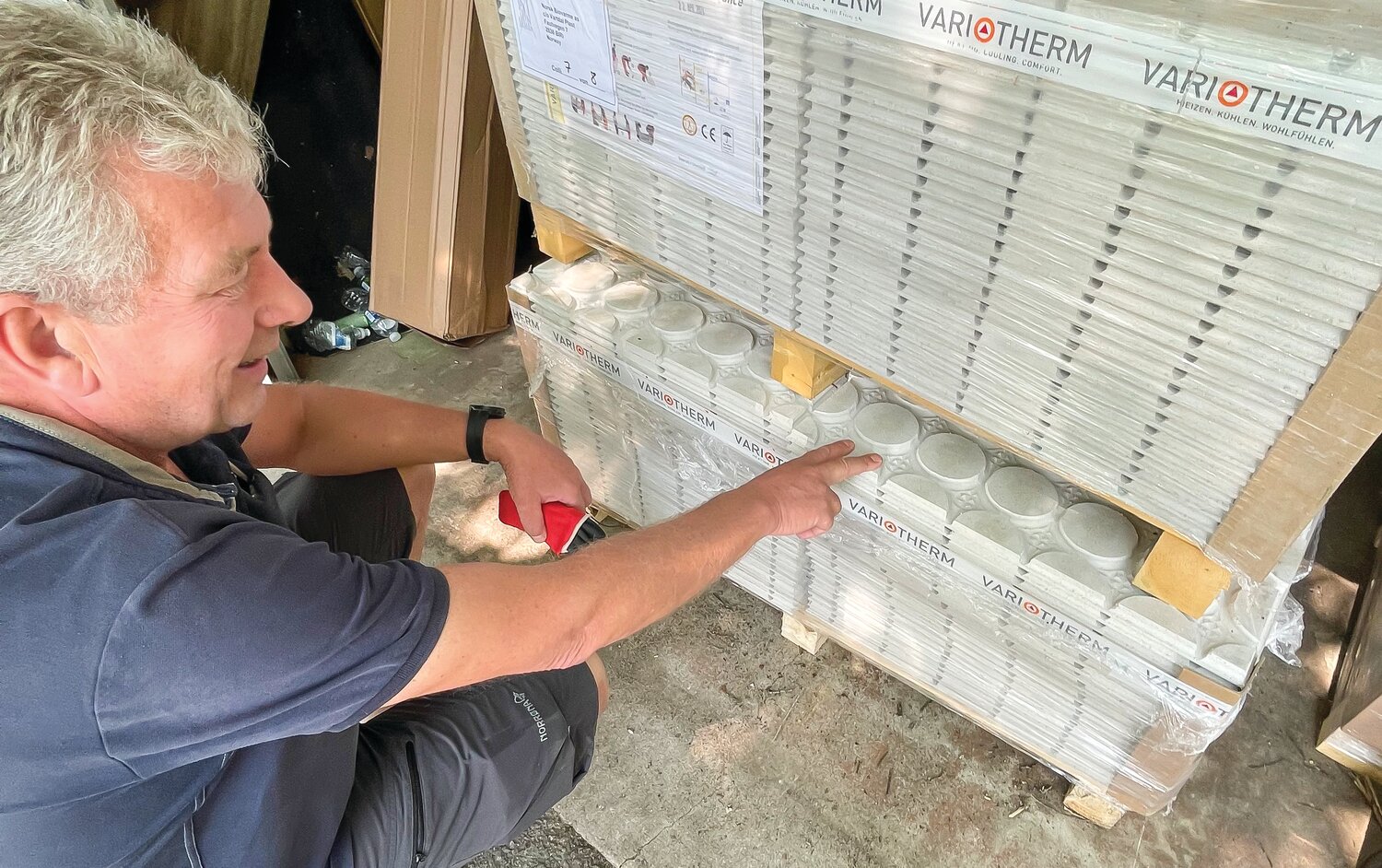Support the Timberjay by making a donation.
Norwegian CEO taps solar for home heating
Norsk BioVarme has developed a system for home heating that relies primarily on the sun, even in January

TOWER— Imagine using the sun to heat a house in northern Minnesota. In January. It may seem impossible, but Arne Weggum says he’s found the right mix of technologies and know-how to make it happen.
Weggum was here last week to scope out the possibilities for his innovative approach to heating as part of the new development underway near the Marjo Motel. Weggum is the CEO of the Norwegian company Norsk BioVarme AS, and the project in Tower would represent the firm’s first venture into the U.S. market.
Weggum’s company doesn’t manufacture a product— it sells know-how, based on Weggum’s long history in biofuels. Originally a forester, Weggum later shifted into promoting the use of biofuels. He continues to see wood fuels, mostly pellets, as a reliable backup for home heating. But he has begun to emphasize solar water-heating panels as the greenest possible heating solution, one that he says is even effective in Norway, where day length in winter is far shorter than in Minnesota.
At the heart of the system, says Weggum, is a large, heavily insulated accumulator tank, which stores the hot water that’s generated through the solar panels.
“The tanks are the battery for the system,” said Weggum. “It’s the cheapest and best battery yet because it lasts as long as the tank, which often lasts as long as the house.” The tank stores the hot water generated by the solar panels and from there the water is circulated through in-floor flexible tubing to warm the floor, providing radiant heat throughout the home.
Using that heat as efficiently as possible is another key element to the system, and that’s where Weggum has turned to another technology, developed in Austria. It’s a floor panel, just over half an inch thick, formed out of gypsum and wood fibers. A pattern of indentations allows for the placement of the flexible tubing, which is then covered by a thin layer of a special type of concrete that transfers heat more efficiently than standard U.S. products. That allows for comfortable heating with hot water that is several degrees cooler than would otherwise be necessary for traditional in-floor heating methods. In fact, he said, the system can effectively warm a room to 72 degrees with water temperatures around 78-80 degrees F, whereas traditional systems in the U.S. need water temperatures of 120 degrees or higher to effectively heat a room or an entire house.
According to Weggum, the thin layer also allows for more rapid adjustment of temperature, which is one of the more common downsides of most in-floor heating systems, particularly those that incorporate hot water tubing or electric cables within a several inch-thick slab of concrete. That lag time in heating and cooling of the slab can either leave a house too cold or too warm, said Weggum, especially during shoulder seasons when outside temperatures tend to fluctuate significantly on a daily basis.
“If you want to change the temperature, this system does it in half an hour,” said Weggum.
That’s opposed to several hours with many traditional in-floor heating technologies.
While the system Weggum designed is virtually unheard of in the U.S., it’s already well-established in many other western countries. “It’s in 27 countries right now,” said Weggum. It’s in New Zealand, it’s in Thailand. It’s in most of the countries in Europe. But it’s never been to the U.S.”
That is, until now. A slight variation on Weggum’s system, which uses a heated interior skirting around the base of the home’s walls, is currently being installed as part of a home renovation by Orlyn Kringstad on Tower’s N. Second Street. The new residences being built near the Marjo Motel will incorporate the in-floor heating system. The installations will serve as a model and test case for how well the system works in northern Minnesota. It also demonstrates how Weggum is happy to use a variety of technologies to find a heating solution for every home.
Solar panels
While most solar panels produced today, which are known as photovoltaics, convert sunlight into electricity, panels designed to heat water are completely different. In colder climates, they use a fluid that won’t freeze to circulate through the panels, transferring the heat that builds up in the process. While photovoltaics are able to convert maybe 10-15 percent of the sunlight that falls on them into electricity, solar heating panels are much more efficient, converting about 80-85 percent of the sunlight into heat energy. Even on a frigid day, sun can generate extremely high temperatures within the panels and that heat is transferred through a circulating pump into the accumulator tank for Weggum’s system.
There are times when the sun doesn’t shine, of course, particularly in winter here in northern Minnesota, and that can sharply limit the effectiveness of the system.
Weggum said a back-up method for keeping the water in the accumulator tank warm is essential to allow the system to work 100 percent of the time. In most cases, he said they’ll install an electric element, just like in a hot water heater, that will keep the water at the temperature necessary to keep the house warm. The system could work that way without the solar panels, but the panels save about 12,000-13,000 kilowatt-hours of electricity annually, at least in Norway. Given that electric prices in Norway are far higher than here in Minnesota, the solar option saves about $2,500 U.S. per year versus heating the water solely with electricity. Given that electric prices are about half that in northern Minnesota, the annual savings likely won’t be the same here as in Norway. Cheaper electricity would reduce the monetary savings, however, Weggum notes that there’s substantially more sunlight in winter in Minnesota than back home in Norway, much of which is at the same latitude as northern Canada. That should help to boost the solar heating capacity of a system here versus one in Norway.
Weggum will be watching the systems he installs here closely to see how well they perform, and what kind of savings they can actually achieve.
While electricity is the most common source of backup heat for Weggum’s systems, there are other options for heating the water as well, including pellet stoves. That’s what Weggum said he uses at his home in Norway and the system is automatic, so other than removing ashes and filling the pellet reserve once a year, his system is virtually set-it-and-forget-it.
Sourcing options
While the components used in Weggum’s system are currently sourced in Europe, he’s already looking for U.S. suppliers for some of the products to reduce shipping costs. He met last week with a steel fabricator in Hibbing about manufacturing his accumulator tanks, which are the size of a large water heater, although they are made with much thicker steel. There are already more than half a dozen U.S.-based manufacturers of solar water-heating panels.
Fully installed, the systems aren’t likely to be cheap, but the upfront costs should easily be made up for in energy savings. Once demonstrated, the systems might eventually qualify for rebates or tax credits that could significantly improve the return on investment.
For now, it’s about proving the technology for the U.S. market and there are few places in the U.S. that would make a better test case for extreme cold temperatures than Tower.






